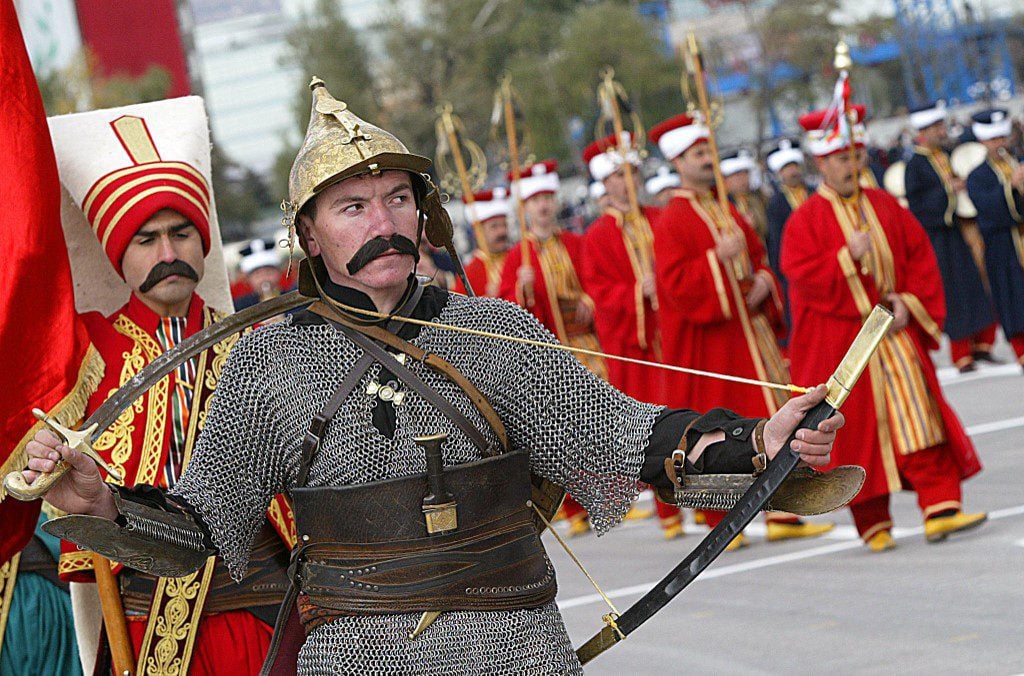
The notion of Ottoman justice is personified in the Sultan as a divine ruler
Youssef Sharqawi
In the Ottoman era, there was no place for an issue that was not in the interest of the Sultan. For four centuries, the “Circle of Justice” had been the pivot of the entire philosophy of the Ottomans. The understanding of justice played a vital role in the Ottoman Empire. Such a thing impacted the ideology of the state and the management of the various groups within its borders. The justice system works as follows:
“Only a just ruler can protect his kingdom. Protected people can produce and pay their taxes. A country full of treasury can create a powerful army to defend itself against external threats. Only a ruler with a strong army can be strong and achieve justice”.
In other words, such a concept means that there has been no justice without a Sultan.
As with Muslim rulers, the Ottoman sultans also considered their followers as “subjects”, whether they were Muslims or not. Therefore, they repeated in their firmans that Allah had entrusted them with the subjects as a trust. Thus, the Ottoman Sultan was a divine ruler, taking his orders from Allah and applying the Sharia. As the Caliph, he had to do so. He has had to rule the people in compliance with the Sharia and the provisions of Allah. And if we go back to the ancient Indo-Persian literature on the “Mirrors for Princes”, we will find that the ruler is compared to the shepherd, while the subjects would be the herd. God entrusts the shepherd with the folk to protect it and lead it on the right path. In turn, people must obey their ruler.
The concept of the shepherd and the herd and the method of divine rule was prevalent in the Ottoman era. In the second half of the fifteenth century, the Ottoman historian and writer Tursun Bey wrote: “The government that depends only on reason, is called the ‘Sultan Yassa’. However, other governing systems rely on the foundations that establish happiness in this world and the hereafter. Those should be called religious politics or Sharia. The Prophet (PBUH) called for Sharia, but only the king can implement this policy with his authority. People cannot live in harmony without a Sultan. Rather, without him, they could be scattered forever. Allah has given the power to only one, to keep order as it should, and we must obey him.” In this speech, Tursun Bey equates the state with the absolute authority of its ruler. For Tursun Bey, presenting the Sultan as the symbol of justice was essential to its continuity.
We notice this in Kânûnname written by the Nişancı to the Sultan Mehmed the Conqueror around the year 1476. The written order of the Sultan who approved this work said: “We organized the affairs of the state to this extent. May my successors who come after me strive to develop them!” The Sultan, then, was the centre of government. He was the source of all powers, and according to the basic concept of Ottoman law, land and subjects belonged to him. In other words, no one had the right, and no one in any way could exercise any authority over the subjects and the land without the special permission of the Sultan. This concept provided the Sultan with absolute sovereignty in the state and allowed him to remove all forms of legal jurisdiction in the vilayets. He was also allowed to exercise monitoring over endowments and private property. In other words, this concept was the cornerstone of the Ottoman central autocratic system. It was the theocratic system of government.
Some researchers argued that Naima, the historian of the Sultan, was the one who crystallized the circle of justice in its Ottoman sense. He did that following the defeat of Karlowitz in 1699. The Sultan asked Naima to find an intellectual formula that can launch internal mobilization and popular cohesion on an authentic Ottoman base. Posted in the official departments, the Circle of Justice was as follows:
“The king is a shepherd, supported by the army.
The army comprises soldiers fed by money.
Money is revenue gathered by the people.
The people are servants, subjected by justice.
Justice is happiness, the well-being of the world.
The world is a garden, hedged in by sovereignty.
Sovereignty is lordship, preserved by law.
Law is administration, governed by the king.”
In this declaration, we do not find anything about culture and science. Instead, the keywords are limited to Sultan, military, and money. As for the state and Sharia, they are dependent on those three words. Such a thing is sufficient evidence of Ottoman divine rule. It is also evidence of the intellectual and cultural desertification that societies experienced during the Ottoman era. That society was military-based in its structure and philosophy. It was underdeveloped in its concepts and system of governance, very much similar to the theocratic system in the Dark Ages.
Sources:
- The Ottoman Empire, The Classical Age 1300 _ 1600, Halil Inalcik, translated by Norman Izakowits and Colin Imber, London, 1973.
- Ahmet Altay, Klasik Dönem Osmanlı Siyasetname Geleneğine Bir Bakış.
- Osmanlı Toplum Yapısının Evrimi.
- The role of the Intellectual in Historical changes. A group of authors, Arab Center for Research & Policy Studies (Arabic Version).
DISCLAIMER
The opinions expressed in this publication are those of our bloggers. They do not purport to reflect the opinions or views of Fanack or its Board of Editors.


